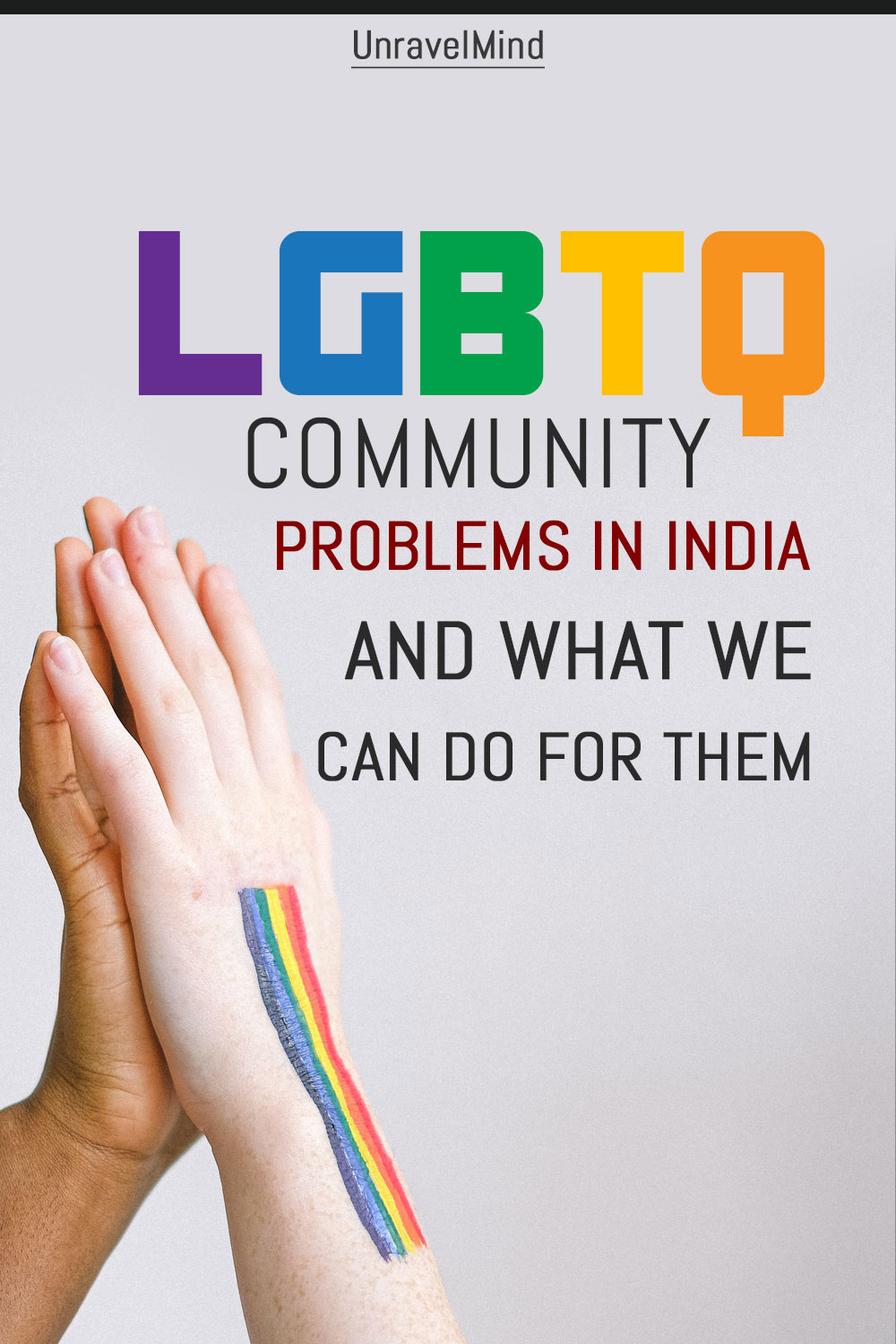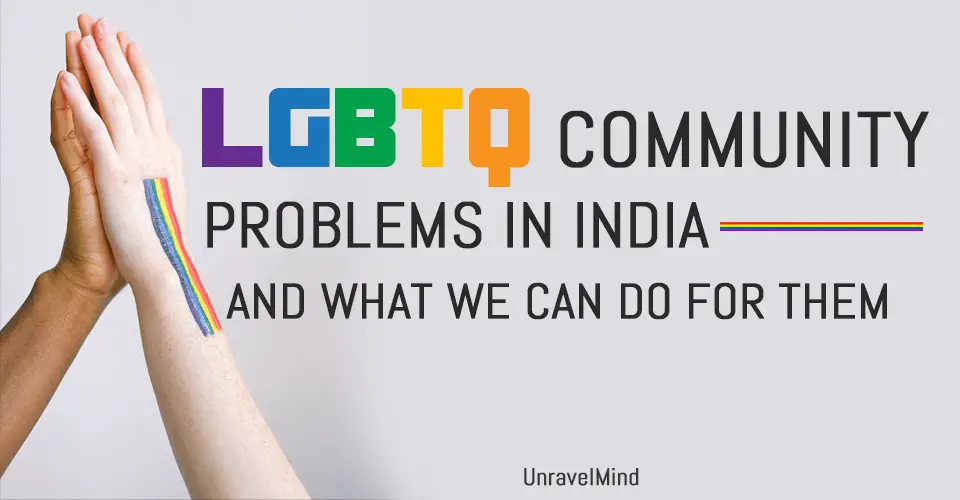Tracing back to the pre-modern Indian era, mythological texts and historical references portrayed the supreme god as having the power to manifest in different combinations of gender. Hindu texts have the recurring theme of homosexuality as being sacred and gender forms were not just restricted to the manifestations of two genders: female and male. Alternative sexuality was rather a disputable topic in Indian culture even in the Vedic period but people were comparatively more tolerant of it.
India has come a long way since then and is coping well with the changing times. Many activists and authors have explored the concept of homosexuality in their works thereafter. One noteworthy writer of the 1970s was Shakuntala Devi who first published a study about homosexuality.
The 2000s have seen a surge of revolutionary ideas and by then section 377 of IPC was viewed as a violation of the fundamental rights of Indian citizens by many, especially people of the LGBTQ community. Even though the constitutional body still viewed the same sex as ‘radicalism influenced by the western culture’ but many homosexual individuals demanded a safer platform to fearlessly express themselves.
Who constitutes the LGBTQ community?
LGBTQ is an acronym used by a prerogative group united by common cultural and social ideals. It is often viewed as a definitive umbrella term to incorporate studies about sexuality and sexual identity.
Expanding LGBTQ
L stands for lesbian: women who identify themselves as individuals with a sexual or emotional attraction towards other women only.
G stands for gay: individuals who are sexually/ emotionally attracted to their same gender, a term preferred to indicate men attracted to other men.
B indicates bisexual: people who are sexually / emotionally attracted to people of both their same gender as well as their opposite gender.
T stands for transgender: an umbrella term for people who emotionally and physically do not identify themselves with the gender assigned to them at birth. Their self-expression does not depend on the gender they were assigned to, based on their genitalia.
Q stands for queer: An umbrella term often used by younger people to indicate their non-normative sexual orientation and expressions. They do not exclusively identify themselves as cisgender.
A cornered community
The reinstitution of section 377 in 2018 ushered hopes to the LGBTQ community but this hasn’t done much to alter the hetero-normative ideals of Indian culture. The LGBTQ community relentlessly suffers from challenges every minority community has to face. Indian judicial system still fails to provide the legal recognition of Trans people. Lack of identity documents leads them to face a number of civic obstacles like the right to vote, right to access public services, right to take judicial actions, to inherit property, to acquire education, etc. On many occasions, these Trans people have to face discrimination in various crucial spheres of life – education, health services, interpersonal relationship, career, etc.
The constant harassment, prejudice, and stigma the trans people have to face in India is often unaccounted for but is slowly growing to be a major concern for social activists. They are often denied admission to pursue a formal education in renowned institutions and in later lives stay unemployed or even are underpaid if working.
There still remain high chances of transgender people being sexually molested, harassed, and physically assaulted. The ordeals do not end here. Lack of job pushes them to poverty and most of them end up in prostitution where they have the risk of getting infected with HIV, syphilis, and other STDs. Trans people in India are bullied, exploited, disregarded, and dehumanized in the cruelest manner possible.
The quality of life of these people is completely trampled by the parochial attitudes of most Indians. Not just the trans people but gays also face resistance from family, friends, and relatives in their choice of contemporary partners. Public display of affection in gay people is still spurned by many. These people have a higher risk of being affected by mental illnesses yet not receiving any acceptance and understanding from people around them. Personality disorders and other mental health issues like loneliness, anxiety, stress, and depression are commonplace in people of the LGBTQ community. The rate of suicides among the LGBTQ community in India has increased over the last few years as people started coming out openly about their sexual orientation.
What can Indians do for them?
Undoubtedly we play a pivotal role in turning the tables for the LGBTQ community. The notion that the ones who do not belong to the community don’t comprehend their communal principles is absolutely redundant. Ironically, we all play the most important part.
What we can do:
1. Incorporate compulsory education on sexuality in educational institutions to sensitize various sexual orientations. Teaching young students that love is universal and can happen between two men, two women, and one man and a woman. Abandon negative connotations attached to homosexuality or asexuality.
2. Knowing the various sexuality-related terminologies and distinctions between them to gather an overall better understanding of one’s sexual identity.
3. Teaching kids about different types of families other than one with a mother and a father like families with two mothers, two fathers, etc.
4. Teaching young adults to respect people for their choice of expression even if it is contrasting to their own.
5. Avoid putting your children into boxes with definite sexuality. Encourage them to sexually explore themselves and their expressions while they can. If your children come out to you with their sexual preferences accept them, understand them, and support them in their choices.
6. Burst myths and negative ideas about sexuality that are prevalent among Indians like cross-dressing, homosexuality is a disease of the mind which needs to be cured through conversion therapies. Such therapies are extremely unprofessional, illegal, and damaging for any individual’s psyche.
7. More pride marches, campaigns should be held and heterosexual people should be inspired to take part in them to increase exposure to the LGBTQ community.
Read more
What Are The Reasons Behind The Lack Of Mental Health Awareness In India?
Pin it



